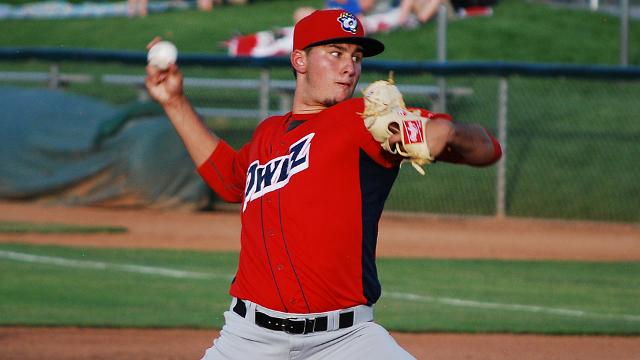Present Future
Summary: If you know anything about Joe Gatto’s unusual career arc, you may have watched him pitch in 2017 and thought to yourself, “Well it’s about freakin’ time!”. Maybe that was just me. Still, Gatto was drafted in the second round of the 2014 draft (aka forever ago) and the belief at the time was that Gatto was not raw like other prep pitchers. Gatto had a matured body and just needed little tweaks here and there as well as experience before he was in the major leagues. Initially his ETA for the major leagues was going to be the 2018 season. Well things didn’t happen that way.Gartto ended up spending a couple more seasons in Rookie Ball than we would’ve thought, but he was clearly primed to breakout back in 2016, his first year at A Ball. Gatto instead was one of the most tortured pitchers in minor league baseball before the Angels finally pulled the plug on that season. An ERA over 7.00 over more than half a season in a pitching friendly environment. Ouch indeed.
It actually took a lot for Gatto to return to the scene of the crime in 2017. There had to be some psychological affect to being back on the same mound. But return he did, and Gatto as it turns out grew a ton from the experience. 21 starts, a 3.46 ERA and a solid K/BB ratio. Hitters were making contact on Joe, but they weren’t squaring him up like before, which speaks to Gatto’s growth in pitching efficiency and getting his pitches to move around a little more in the zone.
Upon being promoted to the Cal League, expectations were tempered. Gatto can strike guys out, but he’s more willing to get a quick groundball out instead. And pitchers that pitch to contact have traditionally really struggled in the Cal League. Gatto didn’t. 6 starts, a 3.34 ERA and more of the same as far as batted ball profile. So now we’re left to wonder, has Gatto truly turned the corner, and if he has, how aggressively might he be promoted? There’s a chance you’re seeing a pitcher that goes 200 innings with a 3.50 ERA in the major leagues. There’s also a chance that his ball just doesn’t move enough to be effective in the majors.
2018 should tell us a lot.
Grades are given from the 20-80 scouting scale. 20-being non-existent ability, 80-being the best I’ve ever seen. MLB average is 50. A 92 mph fastball generally would be a 50. A 97 mph fastball is a 65. A .260 hitter is a 50. A .300 hitter is a 70.
Add The Sports Daily to your Google News Feed!
